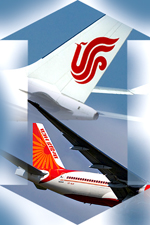INDIAN ARMED FORCES CHIEFS ON OUR RELENTLESS AND FOCUSED PUBLISHING EFFORTS

The insightful articles, inspiring narrations and analytical perspectives presented by the Editorial Team, establish an alluring connect with the reader. My compliments and best wishes to SP Guide Publications.

"Over the past 60 years, the growth of SP Guide Publications has mirrored the rising stature of Indian Navy. Its well-researched and informative magazines on Defence and Aerospace sector have served to shape an educated opinion of our military personnel, policy makers and the public alike. I wish SP's Publication team continued success, fair winds and following seas in all future endeavour!"

Since, its inception in 1964, SP Guide Publications has consistently demonstrated commitment to high-quality journalism in the aerospace and defence sectors, earning a well-deserved reputation as Asia's largest media house in this domain. I wish SP Guide Publications continued success in its pursuit of excellence.
Air China vs Air India

News
Driven by a growing domestic economy and the appreciation of Yuan, Air China and Air Macau parent Air China Ltd posted a net profit of CNY4.23 billion ($600 million or Rs 2,406 crore) in 2007, up 57.3 per cent over the CNY2.69 billion reported in 2006, on a 14.2 per cent lift in operating revenue to CNY51.33 billion ($7 billion or Rs 29,195 crore). In addition to a handsome investment return, the company credited improved operating efficiency and growing number of passengers for the result. The Beijing-based carrier added five new international routes during the year as well as a handful of domestic services. It expanded its fleet from 191 aircraft to 220, excluding Air Macau.
Views
People’s Republic of China’s (PRC) state-owned commercial airline, Air China Ltd is the flag carrier of the PRC and the only Chinese airline to fly the national flag on its entire fleet. Its logo consists of a phoenix in the form of the acronym VIP. It operates 5,090 flights each week worldwide. On June 20, 2007, Air China was ranked 461 out of the world’s Top 500 Brands, an accolade in which Air China is the only airline known to be on the top 500. The ranking reflected the passengers’ enthusiasm for its service, its global network to and from China, and the stability of the airline which has earned a consistent profit over the past six years. In real terms, Air China Ltd is currently the world’s largest carrier by market capitalisation. Splendid, but how did all this happen?
Air China was established and started operations on July 1, 1988. Formerly the Beijing-based international carrier division of Civil Aviation Administration of China (CAAC), it was renamed in 1988 when the Chinese government decided to split the operating divisions of CAAC into two distinct airlines, each with its own nomenclature. Air China was based in Beijing and given the chief responsibility for international flights. It was also granted complete autonomy to run as a corporate house. It is little wonder that the airline posted an impressive profit of $106 million on revenues of $383 million within a year of starting operations. At its launch in 1988, Air China operated 32 international routes to 31 destinations, and also connected 30 cities within China. (The carrier had only 6,000 employees at the time). In less than 10 years after its inception, Air China’s fleet of aircraft had grown to 65 aircraft and it was flying 144 routes overall, posting sales of $1.38 billion in 1997. When it faced a downturn caused by the Asian financial crisis in the late 1990s and to demonstrate the airline’s faith in its ‘Y2K’ preparations, Air China’s chief Wang Li’an and other top officers personally piloted several flights at the turn of the millennium. This boosted the airline’s image considerably in the eyes of the public. Through a series of mergers and sound business practices, the airline has risen to its present position with an impressive fleet totaling close to 220 aircraft. Looking into 2008, Air China is well positioned to capture the tremendous opportunities presented by the coming Olympic Games and the continued rapid economic growth. Some financial quarters have forecast that the airline will boost its net earnings to CNY5.89 billion ($833 million or Rs 3,340 crore) in 2008 and to CNY6.91 billion ($972 million or Rs 3,898 crore) in 2009.





